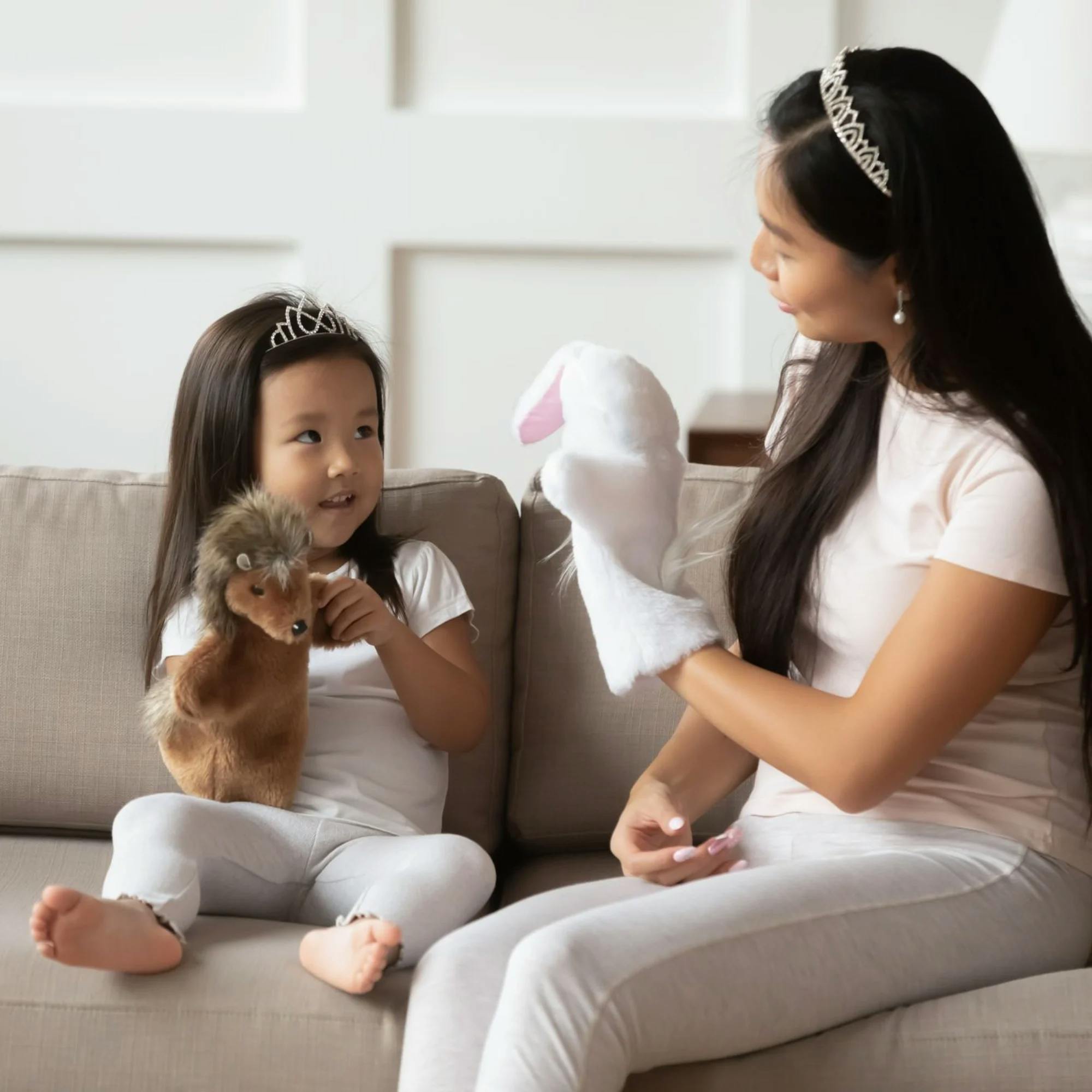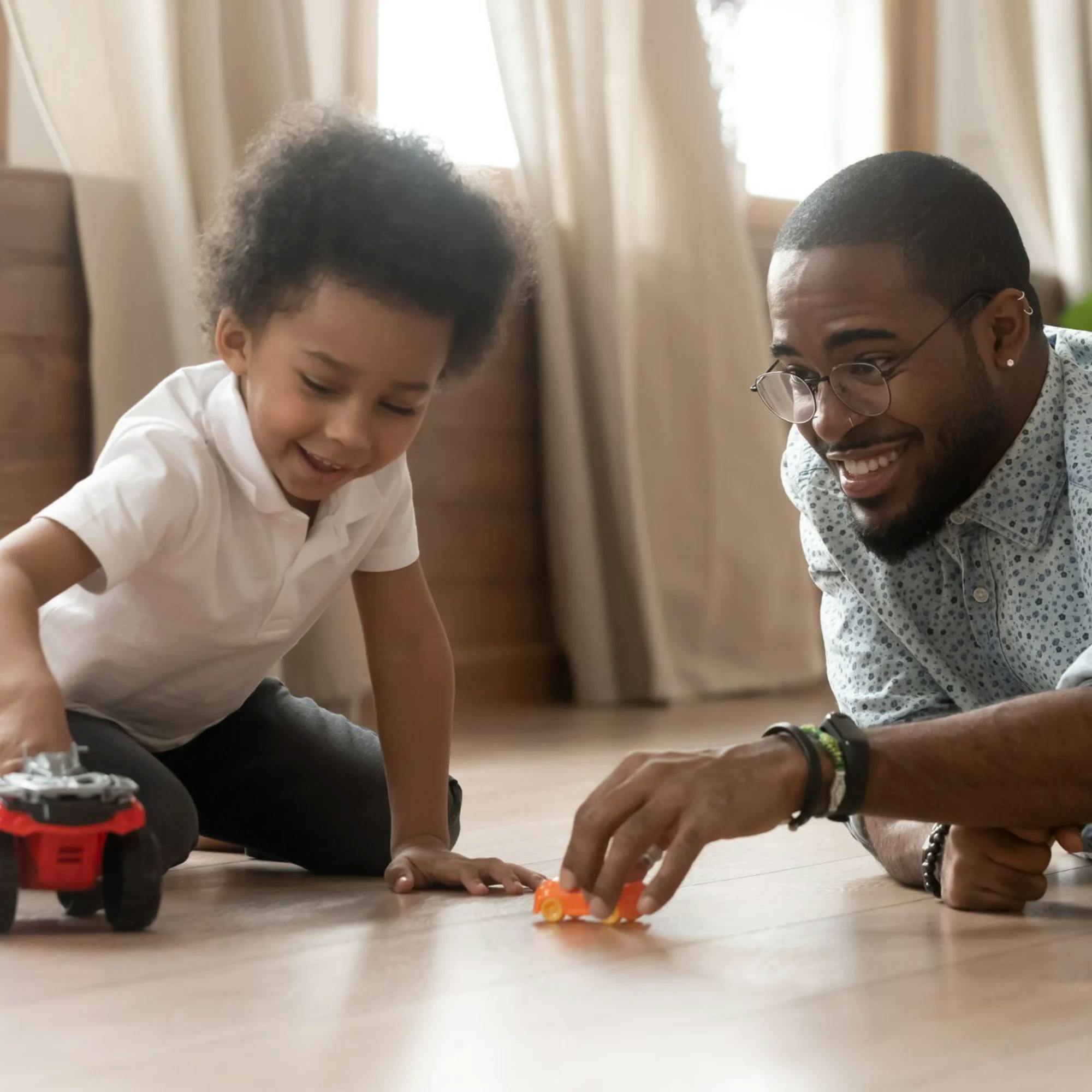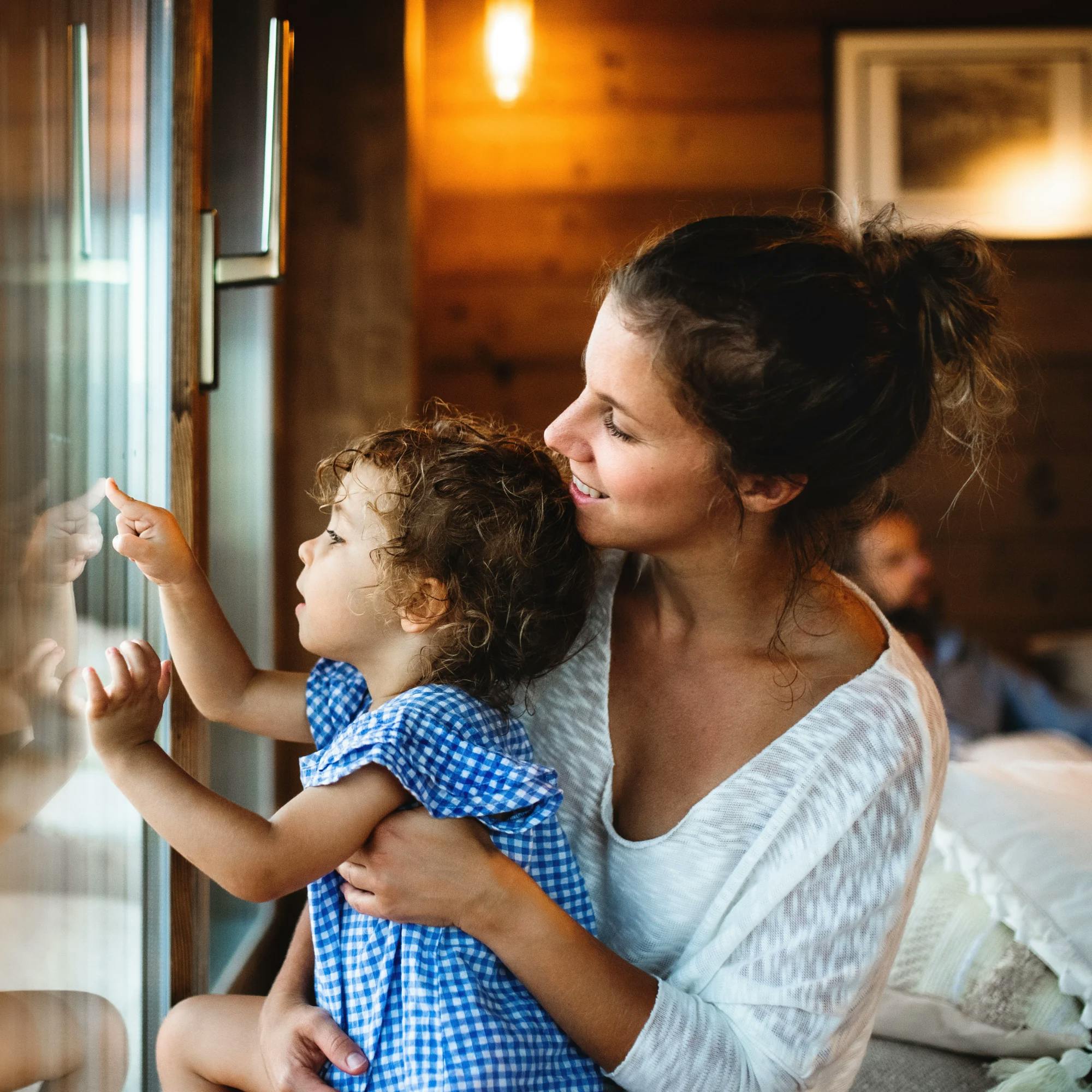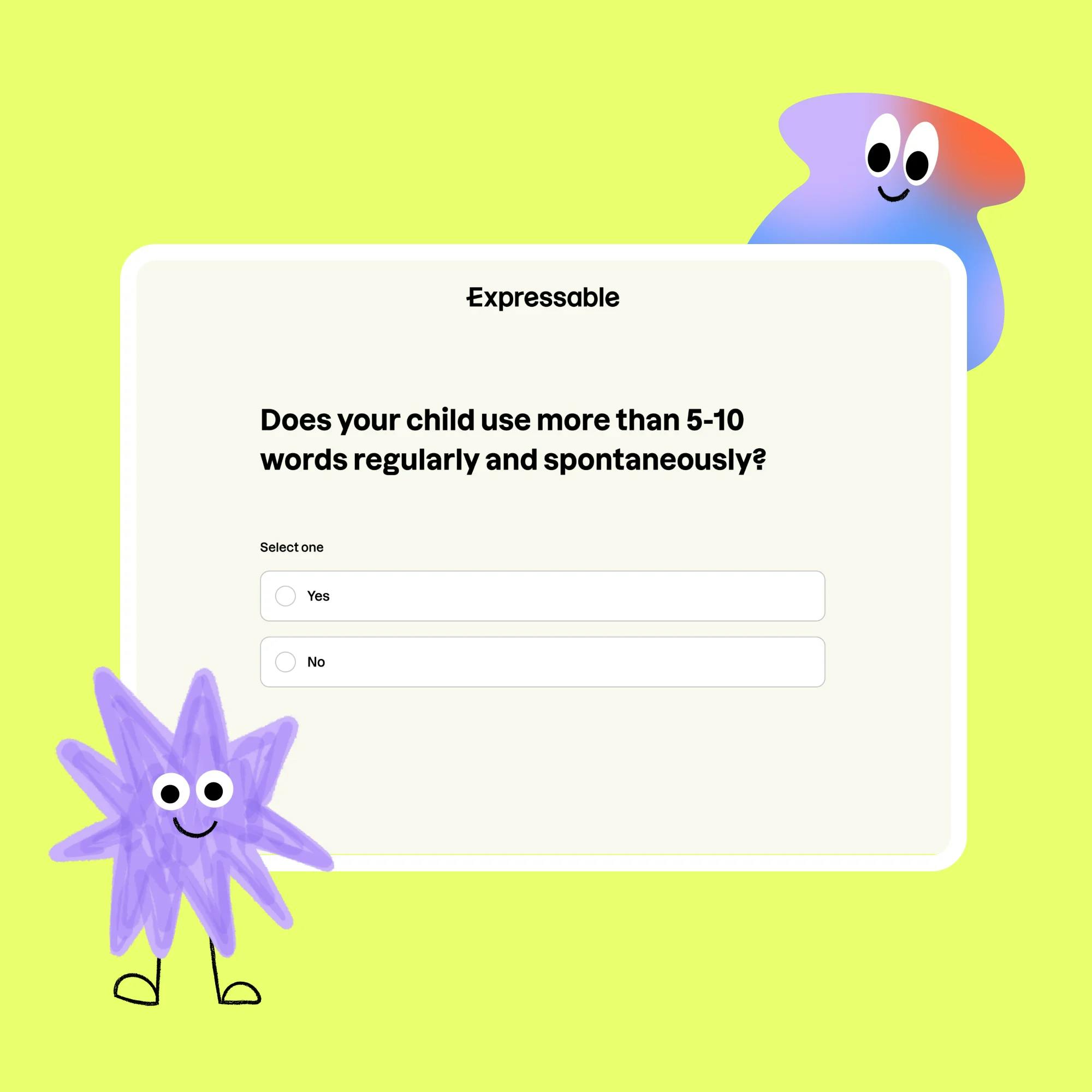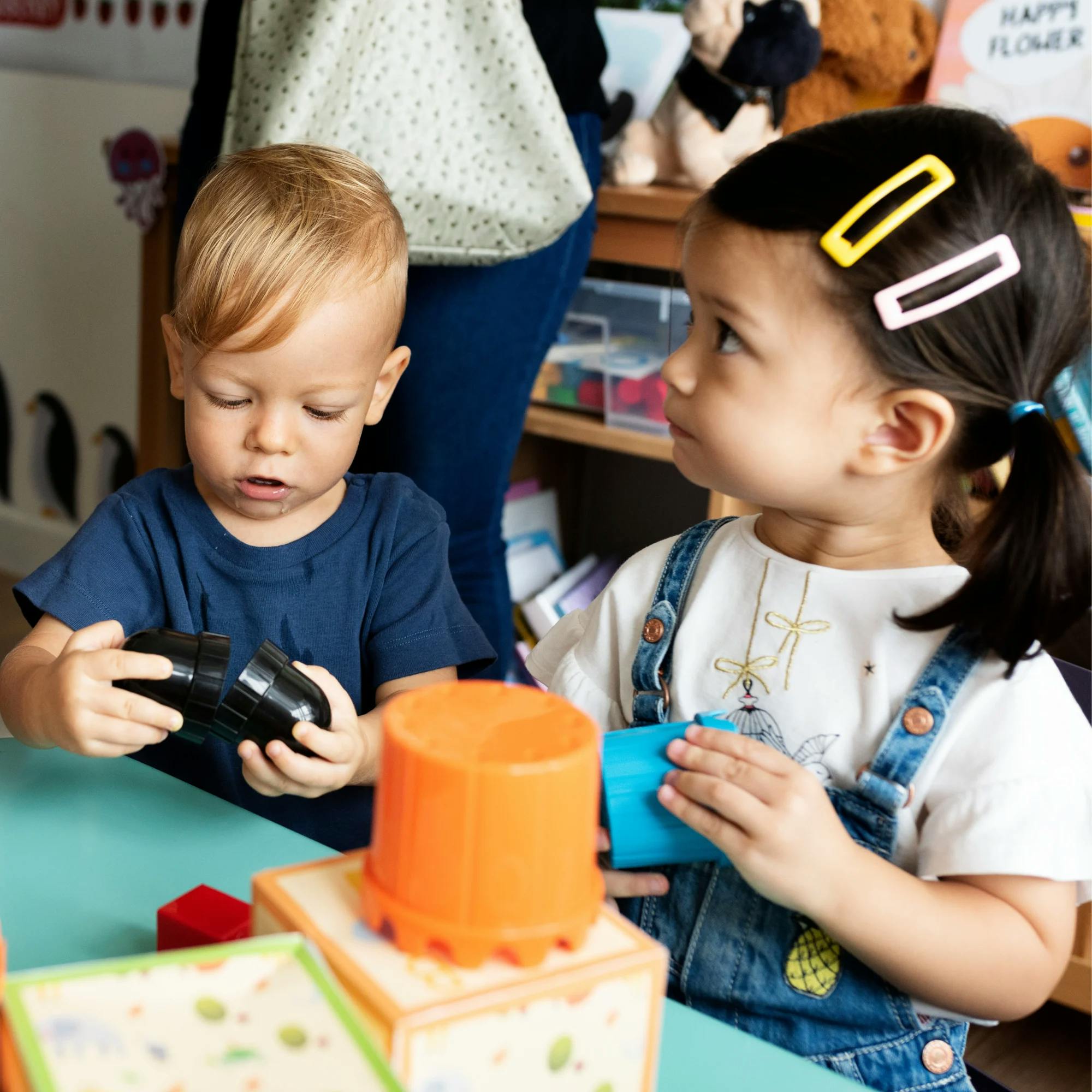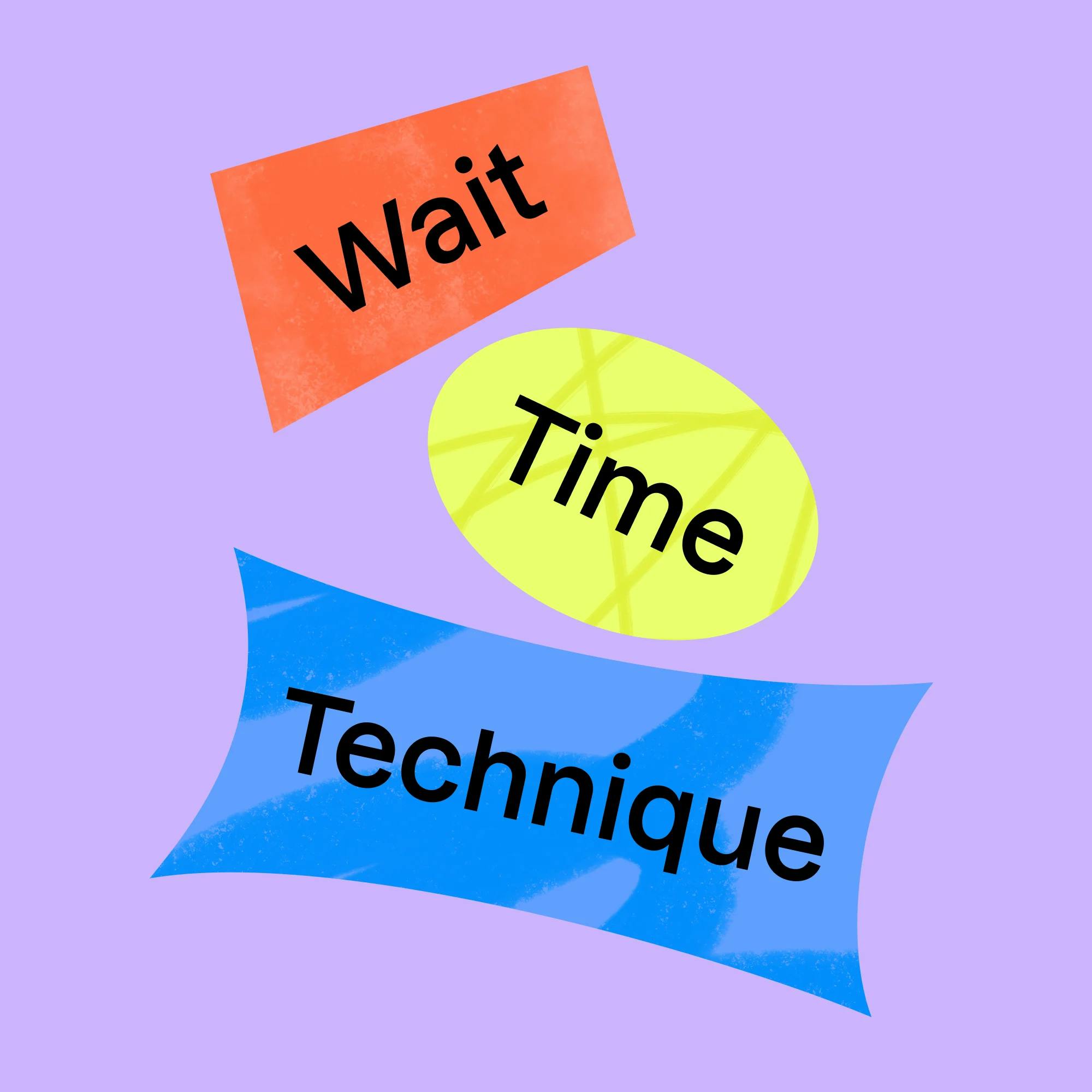When you’re a parent, your daily routine is often packed. There’s a lot to do, plan for, and remember. But when it comes to helping your child’s language development, you don’t have to learn new skills or set aside time to practice. You can help your child learn to talk through simple, small changes in how you interact with them.
Here are 5 easy things you can do to help your child’s speech and language skills keep growing!
1 Move their toys
Put toys or other desired items slightly out of your toddler’s reach, or put them in containers that they can’t open themselves. This creates a highly motivating situation that should prompt your child to ask for help. They might do this by making a gesture, like reaching or pointing, or saying words, like “help” or “open.”


2 Do something unexpected
Whether you’re getting dressed for the day, making breakfast, or playing with toys, do something out of the ordinary to get a response from your child. Put a banana or a teddy bear on your head. Or wear shoes on your hands! You’re likely to get some funny looks and giggles from your little one. But a relaxed, silly environment often leads to more communication! And did you know that even something as simple as laughing together is communication? This is a great example of joint attention.
3 Hand over the wrong item
If your toddler asks for an item, or you can tell that they need something, give them the wrong item and see how they respond. So if your child asks for their jacket, give them their hat. Or if they ask for their ball, give them their baby doll. Again, you’ll likely get some confused looks! But this will prompt your child to continue trying to tell you what they need.
4 Hand your child something they’ll need help with
Give your child an item that they’ll need your assistance with. Maybe it’s their shoes, and they’ll need to ask for them to be tied. Or it could be a bag of snacks that they need help opening. Make sure to pause and stay nearby after you give them the item to see what they do.
5 Create a situation where your child wants “more”
Try giving your child one piece of a toy at a time, like a puzzle. They have to communicate in some way for each piece, perhaps by making a gesture or saying a word like “more” or “again.” You can do this same exercise with pieces of a snack. But this is important: We don’t want to withhold anything from a child for too long. Give them a chance to communicate, but if they don’t, go ahead and give them the item. As you do it, you can model the gesture or word yourself.
What makes these techniques work?
These tactics work because they create natural opportunities for your child to respond. We know it can be easy to go about your daily routines as usual, without slowing down to allow for these opportunities. There are lunches to be made, kids to get in the car–the days are busy! But the key is to pause and create a small chance for communication. The more you do it, the more natural it will become. Sometimes all it takes is hesitating for a few seconds before you hand your child their snack–simply giving them a chance to respond. When they do, they’ll start to learn how powerful communication can be.
Should you expect your child to start talking when you do these things?
As with any new skill, learning to talk takes time. Before your child can do it themselves, they’ll likely need to see lots of models, or demonstrations, from you.
If your toddler isn’t yet talking, you can begin with gestures. Children often start gesturing before speaking. This can be as simple as pointing. For many kids, being able to point to what they need can make a huge difference in their communication skills–and decrease their frustration. You can also teach your child simple baby signs for “more,” “help,” “please,” “drink,” or “eat.”
If your child seems ready to start talking, try modeling a single word they could say during the interaction. This could be something like “Puzzle!” or “Book?”
As your child begins to use more words, you can start working on short phrases and then eventually sentences. So “Book?” might turn into “Book please!” or “I want the book, please!” over time.
You can model these words and phrases for your child, but don’t forget to back off as they gain more independence. Simply pause and see if your child will say something on their own, without your help. This technique is called wait time. It can make all the difference in your child’s communication skills!

How to know if your child needs speech therapy
As you work on speech and language skills at home, it can be helpful to know what milestones to expect at different ages. Every child develops skills at their own pace, but there is a typical timeline to watch for:
As you keep track of your child’s growth and development, always remember to trust your gut. You know your child best! If you think they may not be meeting milestones, it’s never a bad idea to contact a speech therapist for an evaluation. Early intervention is key when it comes to making progress in speech and language development. So the sooner you speak with someone, the better!
You can take our free online speech and language screener with questions tailored to your child’s birthdate. Or, click here to get matched with a speech therapist for your child. We’d be happy to listen to your concerns and answer your questions.
How Expressable Can Help
Concerned your child isn't reaching age-expected milestones? Looking for communication support from a professional? Expressable is a national online speech therapy practice serving children and adults. We treat all major areas of communication and feeding, offer flexible hours including evenings and weekends, and accept most major health insurance plans. We’re proud to have earned more than 3,000 5-star reviews from our clients (4.9/5 average).
Our therapy model is centered on parent and caregiver involvement. Research proves that empowering caregivers to participate in their loved one’s therapy leads to better outcomes. That’s why we combine live, 1-on-1 speech therapy with personalized education and home practice activities for faster progress.
Communication is more than words. It’s how we share how we feel and show who we are. We’re here to help you or your child do just that.

 Abby Barnes, M.S., CCC-SLP
Abby Barnes, M.S., CCC-SLP

